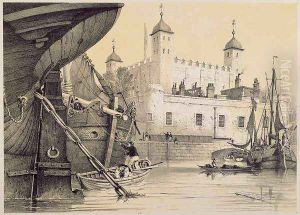Patten, Edmund Paintings
Edmund Patten, born in 1804, was a figure whose contributions to the art world, although not widely recognized in the grand narratives of art history, hold a unique place within the context of 19th-century American art. His life, spanning the tumultuous years of the early to mid-19th century, was marked by both personal and professional endeavors that sought to interpret the rapidly changing world around him through the medium of painting.
Patten's early years were spent in New England, where he was exposed to the rich artistic traditions of the region. This period was crucial in shaping his artistic sensibilities, which were later reflected in his works. Unlike his contemporaries who often traveled to Europe for formal training, Patten's education in art was largely self-taught, supplemented by apprenticeships with local artists. This lack of formal European training would distinguish his style from that of his peers, giving his work a distinctive character that was deeply rooted in the American experience.
Throughout his career, Patten's work oscillated between portraiture and landscapes, capturing not only the faces of his era but also its evolving landscapes. His portraits are notable for their detailed attention to the subject, imbuing each with a sense of individuality and depth that goes beyond mere physical likeness. In his landscapes, Patten demonstrated a keen observation of nature combined with a romantic sensibility, portraying the American wilderness with a reverence that echoed the nation's growing fascination with its own natural beauty.
Despite his talent, Edmund Patten's career was marked by the challenges of gaining recognition in an art world that was increasingly looking towards Europe for inspiration. His adherence to a distinctly American aesthetic at a time when the European influence was dominant may have limited his immediate influence. However, his dedication to capturing the essence of American life and landscape has earned him a place among the notable figures of American art in the 19th century.
Patten's later years were spent in relative obscurity, with limited commercial success. He passed away in 1865, leaving behind a body of work that, while not widely celebrated in his time, has come to be appreciated for its authentic portrayal of 19th-century America. Today, Edmund Patten is recognized as a significant, if understated, contributor to the American art scene, his works offering valuable insights into the cultural and natural landscape of his time.
